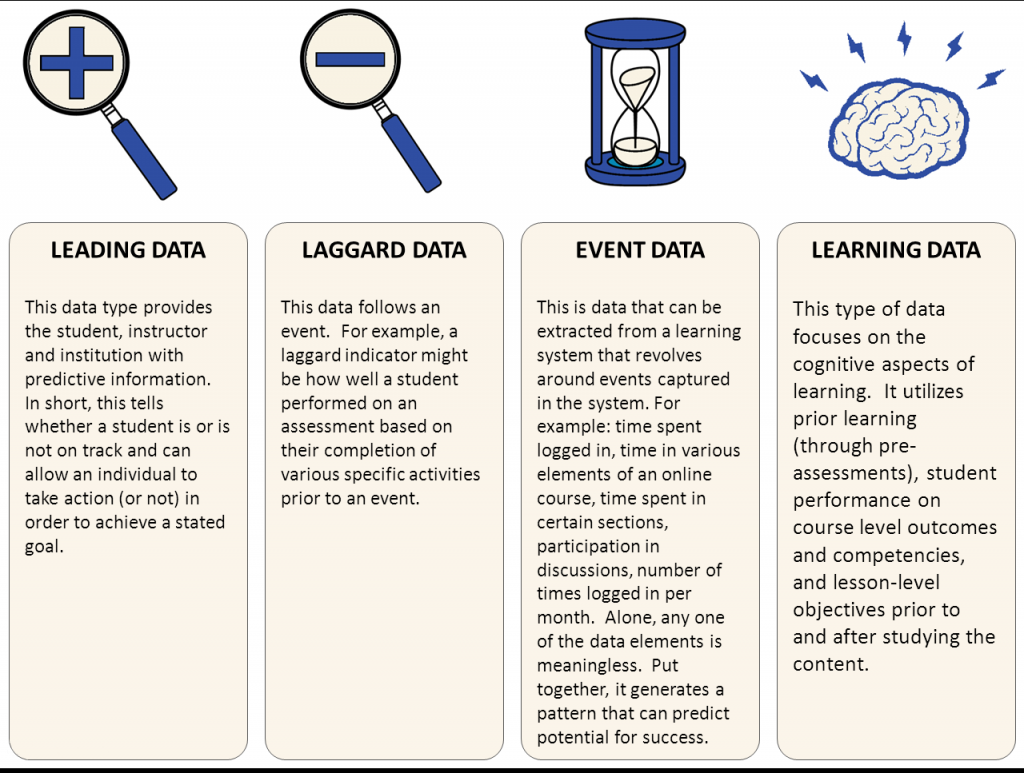For two decades, many in the education world have danced with “Big Data”, taken by the appealing idea of educators and institutions transforming the learning environment through scalable, meaningful insights into individual and aggregate data that can impact the performance of their students. As well-intentioned and important as this concept has been in driving educational change, big data has proven to be a bit like an impressionist painting. From far away, it appears clear and cohesive. But when you approach you realize that each brushstroke isn’t so clear, and perhaps it can be difficult to make meaning of. You begin to question what you saw from afar. Are individual students really benefitting from the large scale collection of performance data?
The promise of big data in transforming education is a difficult one to realize. Yes, we may now have the means to collect the data, but it still requires aggregation and analysis. Perhaps unsurprisingly, there are not too many data scientists working in the field of education. Turning all of our beautiful data into actionable information is a challenging task at the institutional (let alone the classroom) level. Does the average instructor have the time and skill set required to take large data sets, analyze that data, and turn it into truly useful intelligence that will inform his or her instruction and interaction with the students who require the most help? Furthermore, in the amount of time it takes for an instructor to actually analyze this data, its relevance may have diminished. And further still, there are outstanding questions around correlation and causality in educational data—what are the impacts of making modifications to classroom instruction based on data that is not clearly framed? These are some of the challenges around the use of big data in education.
Do I propose that we should abandon data and stick to “traditional” methods of instruction and face-to-face student intervention? Absolutely not! I do, however, propose that we are thinking about data in the wrong way. Why not flip the paradigm and begin to think of data at the micro level…to think of data as something that can be used to impact the student’s real performance…right now! If providing a student with immediate feedback on their work and behavior patterns isn’t a good use of data, I don’t know what is.
“Ok, Todd, so what is little data?” you might ask. Well, think about the Nike Fuel Band. This band uses an entirely fictitious measure of activity (one not based on calories, miles or minutes) to provide you with immediate feedback at the touch of a button around how you are doing with regard to achieving a daily exercise goal. The band allows you to track where you are, how you are doing relative to others, and it provides rewards along the way. There is no proof showing that the use of the Fuel Band will allow you to lose weight, lower cholesterol or be healthier, but users swear by it for its motivational power (and it is a ton of fun to see all those little lights turn green before noon!). The important thing here is that we understand that this kind of data is immediately accessible, easily digestible (no complex BMI calculations required). You simply need to be able to pay attention to one variable. One thing at a time.
Naturally, educational data is not this simple. But the lesson is a good one. I believe the key to unlocking student success on a wide-scale is to work with immediately relevant, small bites of data that can be provided to the student (first) and the instructor. We need to make it very simple – so they do not need to analyze the data in that moment, they simply need to act.
One simple model for understanding little data is to break down this broad concept into four types: Leading Data, Laggard Data, Event Data, and Learning Data.
Little data, as it pertains to education, is a fairly young concept. I believe that making use of this kind of micro-data has unlimited potential for education. Little data allows students to ‘act’ immediately and instructors to provide students with invaluable insight into their own performance, and to have some control over their unique learning experience. With little data, we can provide instructors and students the real-time tools they need to control the variables that determine how, when, and why they learn, and what they do with that knowledge.
At the end of the day, data, by itself is meaningless. What is meaningful is when information can be gleaned from that data very easily and used to motivate the individual to act in a way that will result in some positive outcome. It’s simple. Little data can have a very big impact.
